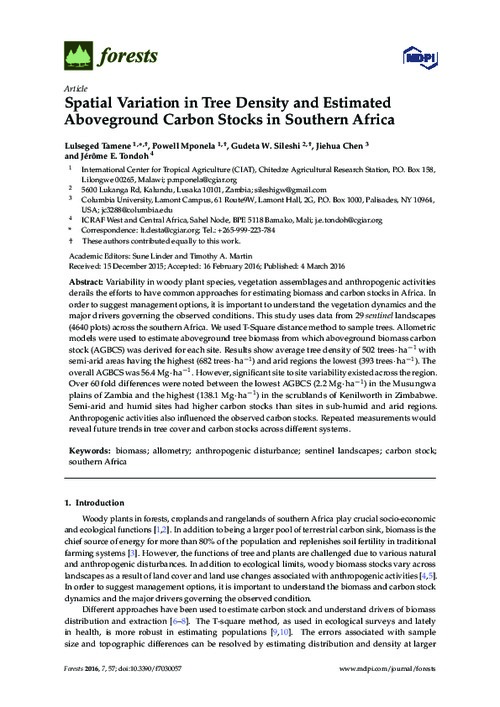Location
MDPI AG, a publisher of open-access scientific journals, was spun off from the Molecular Diversity Preservation International organization. It was formally registered by Shu-Kun Lin and Dietrich Rordorf in May 2010 in Basel, Switzerland, and maintains editorial offices in China, Spain and Serbia. MDPI relies primarily on article processing charges to cover the costs of editorial quality control and production of articles. Over 280 universities and institutes have joined the MDPI Institutional Open Access Program; authors from these organizations pay reduced article processing charges. MDPI is a member of the Committee on Publication Ethics, the International Association of Scientific, Technical, and Medical Publishers, and the Open Access Scholarly Publishers Association (OASPA).
Members:
Resources
Displaying 1426 - 1430 of 1524Are Protected Forests of Bangladesh Prepared for the Implementation of REDD+? A Forest Governance Analysis from Rema-Kalenga Wildlife Sanctuary
The present study investigates the forest governance structure for REDD+ (Reducing Emissions from Deforestation and Forest Degradation) implementation in a protected forest of Bangladesh, namely Rema-Kalenga Wildlife Sanctuary (RKWS). The study analyses the key aspects of forest governance, focusing on drivers of deforestation and forest degradation, governance deficit, institutions and social networks, co-benefits, and opportunities and challenges of REDD+ in RKWS.
Assessment of Land-Use/Land-Cover Change and Forest Fragmentation in the Garhwal Himalayan Region of India
The Garhwal Himalaya has experienced extensive deforestation and forest fragmentation, but data and documentation detailing this transformation of the Himalaya are limited. The aim of this study is to analyse the observed changes in land cover and forest fragmentation that occurred between 1976 and 2014 in the Garhwal Himalayan region in India. Three images from Landsat 2 Multispectral Scanner System (MSS), Landsat 5 Thematic Mapper (TM), and Landsat 8 Operational Land Imager (OLI) were used to extract the land cover maps.
Are Protected Forests of Bangladesh Prepared for the Implementation of REDD+? A Forest Governance Analysis from Rema-Kalenga Wildlife Sanctuary
The present study investigates the forest governance structure for REDD+ (Reducing Emissions from Deforestation and Forest Degradation) implementation in a protected forest of Bangladesh, namely Rema-Kalenga Wildlife Sanctuary (RKWS). The study analyses the key aspects of forest governance, focusing on drivers of deforestation and forest degradation, governance deficit, institutions and social networks, co-benefits, and opportunities and challenges of REDD+ in RKWS.
Implementing REDD+ in a Conflict-Affected Country: A Case Study of the Democratic Republic of Congo
Due to their carbon sequestration potential, tropical forests are a focal point for mitigation of climate change through Reducing Emissions from Deforestation and Forest Degradation (REDD+). The Democratic Republic of Congo (DRC) contains the largest part of the Congo Basin, the second largest rainforest in the world, and has become a main focus for REDD+ initiatives. However, DRC’s ongoing instability and conflict threatens the peace and security of local people, and outcomes of such global initiatives.
Spatial Variation in Tree Density and Estimated Aboveground Carbon Stocks in Southern Africa
Variability in woody plant species, vegetation assemblages and anthropogenic activities derails the efforts to have common approaches for estimating biomass and carbon stocks in Africa. In order to suggest management options, it is important to understand the vegetation dynamics and the major drivers governing the observed conditions. This study uses data from 29 sentinel landscapes (4640 plots) across the southern Africa. We used T-Square distance method to sample trees.






